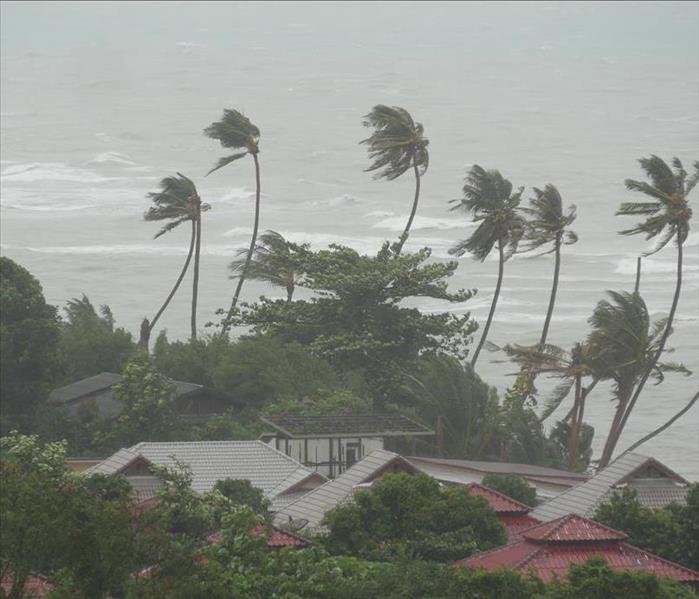What is the difference between a hurricane, typhoon or tropical storm?
7/12/2021 (Permalink)
 If your Northeast Florida home experience storm damage from a hurricane or tropical storm we're here to help! Call us 24/7 and we'll send someone out.
If your Northeast Florida home experience storm damage from a hurricane or tropical storm we're here to help! Call us 24/7 and we'll send someone out.
If a storm has violent winds, heavy rains, and creates a storm surge, what is it called? Is it a hurricane or a typhoon? Where do tropical storms fit into the picture? Weather terminology can be confusing, but we can help you understand the differences between these kinds of storms.
Hurricane and typhoon are two different terms for the same weather phenomenon. In short, they’re tropical cyclones, rotating, organized systems of clouds and thunderstorms that originate over tropical or subtropical waters and have closed, low-level circulation. For a storm to be considered a hurricane or a typhoon, the tropical cyclone must have 74 mph or higher sustained winds. They can occur at any time of year, but there are seasons during which these storms are most common. If the two storms are the same thing, though, why do they have different names? It has to do primarily with the location.
- Hurricanes are cyclones located in the North Atlantic Ocean, the central North Pacific Ocean, and the eastern North Pacific Ocean. They’re rated between Category 1 through Category 5 by the national hurricane center. Hurricane season runs from June 1st to November 30th.
- Typhoons are cyclones that originate in the Northwest Pacific Ocean. They are generally stronger than hurricanes, but they do less damage because of where they’re located. Typhoons commonly occur from May to October.
- In the South Pacific and Indian Oceans, they are simply called tropical cyclones. The cyclone season runs from November to April.
These types of storms form when air is heated by warm seawater, causing the air to rise quickly. As it cools down again, more warm air rises below and pushes it aside. This cycle creates strong winds, and when it happens over the sea, the result can be huge waves. Scientists believe that the intensity of hurricanes will increase in the future because the temperature of ocean water is rising.
Of course, there are different stages of storms leading up to the formation of a hurricane or typhoon. The first stage is a tropical depression, sometimes referred to as a tropical wave, disturbance, feature, or system. This is a cyclone with winds of 38 miles per hour. When a cyclone’s wind speeds reach 39 to 73 miles per hour, it becomes a tropical storm. At that point, you’ll see it on the hurricane tracker, classified on the same scale as hurricanes. The U.S. National Hurricane Center (NHC) issues advisories based on information collected through reconnaissance aircraft missions, vessels, equipment located on islands, and buoys so that people can keep track of local storms and protect their homes and businesses.
If your Northeast Florida home is damaged in a hurricane or tropical storm, call SERVPRO of Mandarin. Our highly-trained restoration technicians have the experience and equipment to restore your Jacksonville home to its pre-storm condition. A trusted leader in the restoration industry, we’ve served our community for more than 40 years. Call (904) 636-0044 or contact us through our website.






 24/7 Emergency Service
24/7 Emergency Service